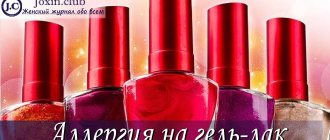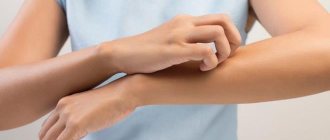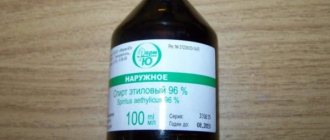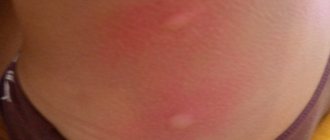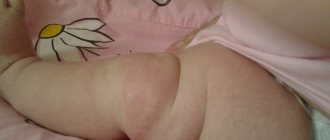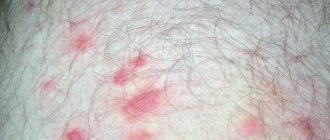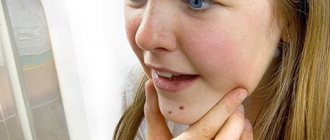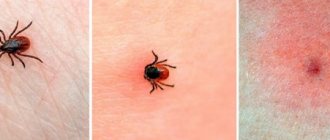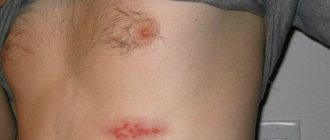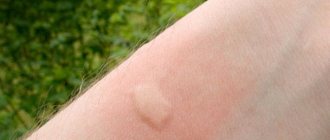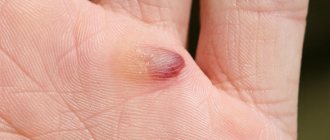A severe allergy to insect bites is a problem that affects many people. What makes the fight against it much more difficult is that the body’s high sensitivity to bites usually lasts a lifetime, and in many cases the manifestations of allergies can intensify from one bite to the next.
Often a person has a hereditary predisposition to allergies. An unfavorable environmental situation, the constantly growing isolation of a person (especially a child) from nature, as well as some diseases enhance this heightened sensitivity to various substances, thereby increasing the likelihood of a severe allergic reaction to the bite of almost any insect.
On a note
Poisons, saliva and other insect secretions are considered strong allergens. Sometimes even airborne chitinous hairs, pieces of outer skin, and insect excrement can cause a dangerous allergic reaction.
However, most often, cases of the most severe allergies are observed after bites by Hymenoptera insects. In 7% of cases these are bees, somewhat less often - wasps, hornets, bumblebees and tropical ants. Much less often the body reacts severely to the bites of mosquitoes, midges, fleas, bedbugs and other non-stinging insects.
The photo shows an example of a severe allergic reaction to a hornet sting:
The aggressive effect of the venom of hymenoptera insects is due to the characteristics of its constituent components. For example, bee venom contains the following substances:
- Melitin - this compound actively destroys red blood cells, causes acute inflammation, muscle spasms and tissue metabolism disorders, and reduces blood clotting.
- Apamin - this protein has significant similarities with the neurotoxins of snake and scorpion venoms and strongly excites the structures of the nervous system.
- Hyaluronidase - helps the poison spread throughout the body.
- Phospholipase A – enhances the inflammatory process and stimulates hemolysis of red blood cells.
- Histamine - dilates blood vessels, provokes inflammation.
In addition, a special protein contained in bee venom causes mast cells in the affected tissues to release their own histamine, which is the main activator of allergic processes.
Wasp venom is distinguished by the presence of a substance called kinin, which causes vasodilation, contraction of smooth muscles and provokes acute inflammation. And the venom of various types of hornets also contains acetylcholine, which slows the heart rate, lowers blood pressure, contracts the muscles of the bronchi and increases the secretion of the bronchial glands.
On a note
Around the world, three times more people die from allergic reactions to insect bites than from snake bites, and a person can die from just one bite.
The reaction to the bites of blood-sucking insects - bedbugs, fleas, mosquitoes, etc. - is due to the presence of special enzymes in their saliva that cause allergies (for example, substances that prevent rapid blood clotting). In addition, a flea, for example, often literally bites into the skin almost with its head, introducing additional irritating substances into the wound.
The photo below shows a flea at the moment of a bite:
The saliva of adult bed bugs contains an analgesic, making their bites virtually painless and usually not detected until the morning. Also, the saliva of blood-sucking insects sometimes contains pathogens of very dangerous diseases: malaria, plague, tularemia, hepatitis B, anthrax and others.
How does culicidosis manifest?
Usually a healthy body responds quickly enough to mosquito bites.
The human immune system begins to interact with the injected substances, penetrating the skin at the moment of stinging. The damaged area quickly turns red, swelling occurs, and severe itching begins. After a few days, all primary signs quickly disappear, leaving not even the slightest trace. This results in a mild allergic reaction.
Medicine in 2021 has developed various substances and medications used to relieve the local reaction that occurs at the site of an insect attack.
Some people respond quite strongly to a mosquito bite. Because of this, ordinary substances and conventional drug treatment do not bring quick results in alleviating the current situation. A significant allergic reaction provokes various complications up to anaphylactic shock.
A common mild allergic reaction to mosquito wounds in children is a small pink or red swelling, similar to a bee sting.
Immediately at the site of the mosquito bite, severe itching begins, disturbing the person’s sleep. In such cases, a slight swelling or plaque up to 10 mm in size appears at the site of injury.
This swelling remains on the body for 24 hours and usually disappears without leaving any traces. This fairly strong reaction is more common for young children with undeveloped immunity. With age, the immune system in the child’s body begins to cope better with insect bites and the problem stops.
Severe cases are characterized by extensive responses of the body to the enzyme administered subcutaneously by the mosquito. They are expressed in the form of redness or rash all over the body, accompanied by quite severe itching or Quincke's edema. These cases are quite dangerous, you should not neglect them and consult a doctor.
Which flies are dangerous to people
Of the flies that bite, the following species pose a danger to people:
- wolfharts - lay larvae on the mucous membranes and damaged areas of the skin of animals, birds and people;
- horseflies - feed on blood, bite painfully, wounds bleed for a long time, can infect anthrax, tularemia, leukemia, polio and other serious diseases;
- black - lay eggs in open wounds of animals;
- deer - feed on the blood of people and domestic animals, and are carriers of dangerous diseases;
- green flies - lay eggs in open wounds, on meat, in garbage;
- burners - feed on the blood of domestic animals and people, bite painfully and inject a burning toxin into the skin, causing itching;
- sandy - small flies, the bite causes itching, burning, causing an allergic reaction;
- Tsetse flies - together with saliva, introduce trypanosomes into the skin - the causative agents of the African disease - sleeping sickness (Nagant disease), which can be fatal.
- tumbu - during a bite, it launches larvae into the skin, which spread throughout the body.
What indicates an allergy
A rash in the form of mosquito bites indicates an allergy if:
- it is distributed throughout the body, both in areas covered by clothing and in open areas;
- the elements have an irregular shape and merge with each other;
- the bite mark soon “swells” and does not change for a long time, while allergic rashes can relatively quickly change their color, size and shape;
- after taking antihistamines, pimples, like those from a mosquito bite, disappear or lose their previous symptoms;
- those around him, who were in the same conditions as the sick person, did not find anything suspicious on their skin.
Antiallergic drugs for insect bites
Antiallergic drugs used after insect bites can be divided into the following groups:
- Antihistamines or, otherwise, H1 receptor blockers: 1st generation - Diphenhydramine, Diprazine, Suprastin, Tavegil, Diazolin, 2nd generation - Astemizole, Terfenadine, 3rd generation - Loratadine (Claritin), Azelastine.
- Mast cell stabilizers: Nedocromil, Ketotifen, Intal.
- Glucocorticoids: Prednisolone, Hydrocortisone, Betamethasone.
- Symptomatic remedies: adrenaline, Salbutamol, Fenoterol.
It is also useful to read: About insect bites and their treatment
And one more thing: We caught bedbugs and tested the effect of GEKTOR powder on them - it turned out to be quite a lethal thing...
Of the antihistamines for insect bites, drugs of the new generation (II and III) are most often prescribed today. They do not have cardiotoxic or hepatotoxic effects, do not inhibit the central nervous system, and their duration of action is longer.
Claritin is widely used for allergies, including insect bites. However, it is worth noting that in some cases it is justified to prescribe first-generation drugs, which do not act for long, but their effect occurs faster.
Important:
When taking any medications, including Diazolin, Suprastin, Diphenhydramine, etc., you must remember that the medications themselves can, in rare cases, cause allergic reactions, including angioedema.
In folk medicine, to relieve irritation that occurs after insect bites, calendula tincture, onion, plantain and lemon juice, as well as a solution of baking soda are used. For mosquito bites, use tincture of milkweed and woodlice herb.
Essential oils of clove, anise, eucalyptus and basil repel insects.
Hydrocortisone and other glucocorticosteroids used topically, for example, in the form of an ointment, will help relieve local inflammation from insect bites.
Mosquito activation period in Russia
A mosquito is a two-winged insect, known to all residents of Russia from early childhood. There are about 3,000 species of these insects in the world. About 100 species live in Russia, the most popular of which is the common mosquito.
Most of Russia is located in a temperate climate, where insect activity begins in early May and ends in October. These figures may depend on weather conditions. Early spring and high air humidity can speed up the process of appearance of bloodsuckers by up to 1 month.
For full reproduction and development of mosquitoes, especially their larvae, high humidity and dampness are necessary. In the summer, mosquitoes can be found on rivers and lakes, as well as in places with large amounts of water and moisture, in swamps or wetlands.
Mosquitoes can live near a human home. Neither walls nor windows help against their attack. It was noticed that mosquitoes cannot reach the fifth or sixth floors - the higher the apartment is, the less chance of encountering this insect within the walls of your house.
In winter, in warm basements you can find mosquitoes in an inactive and sleepy state. They survive thanks to the warm air in the basement. Humidity, which is often found in basements, also contributes to the prolonged activity of mosquitoes.
It has long been known that only females in the mosquito family suck blood. Males are not adapted to bite through the skin of a person or animal.
To find food for herself, the female mosquito focuses on several factors. Among them are:
- the smell of sweat;
- carbon dioxide exhaled from the mouth;
- heat emanating from the body of a living being.
Not only these factors can attract mosquitoes. Insects also respond to the movement of a living creature in space. Typically, mosquito activity occurs in the dark, after complete darkness. A female mosquito can detect the smell of human sweat from a distance of several kilometers. She only needs 1 bite to lay eggs within 3 days and complete her life cycle.
Some mosquitoes are carriers of dangerous infectious diseases such as malaria. Russian latitudes have a small amount of heat required for the growth of an infectious pathogen in the body of a mosquito.
It has been noticed that there is a certain type of people who attract blood-sucking insects. These include:
- Children. Small children have thin skin that is easily bitten by insects. The child’s body has accelerated metabolic processes, which allows the female mosquito to quickly find its victim;
- People with increased levels of sweating. Due to high sweating, the smell from a person increases, which is a reference point for the bloodsucker;
- People who built their homes near forests or bodies of water. As mentioned above, these are favorite places for mosquitoes to settle and live. There their distribution is significantly greater than in the city, which increases the chance of being bitten by a mosquito;
- People who frequently visit mosquito habitats. They often bite people who prefer to relax in forests, near bodies of water, or visit wetlands.
The reason for the spread of allergies to mosquito bites in children is the coagulant poison found in the insect’s saliva. This poison is injected by a mosquito under the human epithelium to reduce blood clotting. This is necessary so that the mosquito consumes the required amount of blood before it completely coagulates. The venom in insect saliva contains certain protein structures. The body reacts to them in the form of allergic consequences.
Mosquito attacks on children
For a child with an immature immune system, the consequences of a mosquito attack are usually more serious. This is what a mosquito bite in a child who is not prone to allergies will look like in a photo, even if it was the only insect.
An infant has almost complete immunity, and many medications cannot yet be used. Very young children are swaddled, so in newborn children all the bites will be concentrated on the face.
To prevent mosquito bites in infants, it is best to hang a mosquito net on the stroller and crib. If the baby is nevertheless bitten, it is necessary to consult an allergist as soon as possible. Mosquito bites in a child without a developed immune system can cause severe allergies. An example photo of mosquito bites in children below is a fairly mild allergy.
If the mosquito “successfully” hits the desired point, the soft tissues of the nose and larynx may swell, blocking the airways. You cannot pull if there is severe swelling.
Causes of allergies to insect bites in children
The fundamental reasons for the development of mosquito allergies in children have been identified:
Genetic predisposition to this disease. If one of the relatives or both parents have difficulty with insect bites, then the possibility of spreading allergic reactions to mosquito bites increases several times.
Sensitization. This term refers to special sensitivity to specific stimuli. With sensitization, the concentration of immunoglobulin E increases, which is the main impetus for the development of allergic reactions. Several factors can provoke such processes. These include poor lifestyle, poor diet, chronic diseases and environmental conditions in which a person lives.
If we talk about a child’s allergy to a mosquito bite, then this is a hereditary predisposition to this disease, since the child is still small enough to pick up bad habits.
First signs and symptoms in children.
An allergic reaction to an insect bite in a child results in severe redness. This is not the usual redness that occurs in the average person. A large spot up to 10 cm in diameter grows on the child’s skin; it becomes inflamed and looks swollen. Such skin manifestations are typical only for children, and are much more common in them than in adults. Allergic reactions to a mosquito bite can also include the following factors:
- a fairly rapid increase in size of the bitten area. This occurs due to severe swelling, which is the body's first response to allergies;
- The change in skin color at the site of the bite spreads quite quickly and can occupy a very large area of the body.
- The child develops urticaria on the skin in the form of small red dots throughout the body.
In adults, the immune system is more stable than in children and allergic reactions do not develop as noticeably. Basically, general reactions of the body manifest themselves, expressed as asthma (shortness of breath or suffocation), rhinitis, discomfort in the abdomen, and severe dizziness. more about allergic rhinitis in the article. If all these symptoms intensify and make it difficult to lead a normal life, it is necessary to urgently take measures to stop the allergic reaction.
A rapid decrease in blood pressure, severe dizziness or increasing weakness are the first indicators of anaphylactic shock. In case of them, first aid should be provided immediately, otherwise the situation may become critical for the person. No less dangerous is Quincke's edema, which spreads to the upper part of the human body - to the neck, face and mucous membranes inside the mouth. Rapidly spreading swelling can cause suffocation. This process is quite dangerous and it is certainly forbidden to hesitate in such cases.
Also, mosquito bites cause unbearable itching, the person begins to scratch himself. Injured and damaged skin is easily susceptible to various infections and penetration of microbes into the scratched wound, which causes the temperature at the wound site to rise. Often mosquito bites are accompanied by redness and increased temperature in the bitten area, which indicates inflammation.
How dangerous is an acute form of allergy?
Hives that occur after insect bites are not the most severe form of allergy. Much more dangerous are the symptoms of general intoxication, a sharp drop in blood pressure, suffocation and collapse - all this can pose a threat to human life.
The most dangerous complications of allergies are anaphylactic shock and Quincke's edema.
Quincke's edema, or, otherwise, giant urticaria, is an acute, extensive swelling of tissues with well-developed subcutaneous fat. This swelling is caused by a powerful release of biologically active substances into the blood, which cause vasodilation and increase their permeability.
Severe swelling of the larynx and tongue is very dangerous - in this case there is a high risk of asphyxia, and a person may die from suffocation. Also highly dangerous is cerebral edema, which can result in neurological symptoms: convulsions and paralysis. In case of these severe reactions to insect bites, the patient should be urgently hospitalized to treat the allergy.
The photo below shows Quincke's edema:
Anaphylactic shock, which sometimes also develops after insect bites, occurs due to disruption of peripheral and central circulation under the influence of biologically active substances that are released into the blood in large quantities (in particular serotonin).
The victim becomes restless. He develops shortness of breath, urination is impaired, and confusion occurs. The skin becomes cold, bluish and damp. Nausea, vomiting, and diarrhea may occur.
In the case of developing anaphylactic shock, skin irritation that occurs after an insect bite is usually pronounced, accompanied by severe pain and increasing swelling. Local itching quickly spreads over a wide area of the body. Laryngeal edema, broncho- and laryngospasm often occur, and blood pressure drops. Without adequate treatment, a person can die within minutes or hours from suffocation and associated vascular collapse.
First aid after a bite
Looking at photos of mosquito bites of children, it is clear that in order to prevent scratching and infection, it is necessary to relieve itching and inflammation immediately after the bite with special means.
The most popular local gels and ointments are:
- Fenistil. In the form of a gel, the drug has an anti-allergenic and cooling effect. Its use is permissible in patients from 1 month.
- Tsindol. The suspension has a drying and anti-inflammatory effect. The medicine is suitable for any age.
- Star. The balm helps relieve itching. Due to the high inclusion of esters, it is not suitable for children under 2 years of age.
- Psilo-balm. Quickly relieves itching, but is not prescribed to patients under 2 years of age.
- Rescuer. The balm relieves pain, itching, and inflammation.
- Iricar. Has anti-inflammatory and antipruritic properties. Allowed since the year.
Do not smear the bite with alcohol-containing products, as this can lead to skin burns.
Treatment of a child's allergy to mosquito bites
If the inflammation after a mosquito bite on the baby’s body does not disappear within 24 hours, then you should think about an allergic reaction. In this case, you need to consult a doctor who can tell you exactly what medications should be used for treatment. Commonly used medications:
First of all, you need to use Miramistin, a light solution of potassium permanganate or Chlorhexidine. Activities are carried out two or three times a day. This allows you to avoid re-infection of the body.
In addition to treating the skin at the site of the bite, you should use an antihistamine such as Zyrtec. These are special antiallergic drugs of the latest generation; they can stop the first signs of allergic reactions in children, without affecting the functioning of the nervous system.
This is very important, especially for young children, during the development of the nervous system. The course of antihistamines should last up to 10 days. If you need to continue the course, you should consult a doctor who can prescribe additional treatment.
It is necessary to use enterosorbents that help remove toxins from the body that accumulate in the body during the course of the disease;
In addition to Miramistin, anti-allergenic and anti-inflammatory external agents are used. Such as Fenistil-gel, Tavegil, Gistan. These drugs are very good at relieving itching that occurs after an attack by bloodsuckers.
You can also use Zvezdochka balm. However, it can only be used in cases where the child’s skin is not damaged.
In addition to medications, you need to worry about the child’s nutrition, give him more fluids to drink, which helps remove toxins from the body. Heavy food brings additional stress to the liver, which is very undesirable when an allergic reaction occurs.
Don't wait until your condition is critical, call a doctor.
Ethnoscience.
Most often, mosquito bites cause severe irritation due to itching. Because of this, numerous scratched wounds appear on the human body, causing discomfort or the development of infections that enter the body through open sores.
Even an adult has difficulty controlling the urge to scratch a mosquito bite. The situation is more complicated with children - they cannot control the desire to scratch. Not only medications, but also folk methods can cope with severe itching.
Most often, these are the drugs that are at hand, but a person may not know that they can alleviate the condition that occurs due to a mosquito bite.
To reduce itching, lotions made from a baking soda solution are actively used. To do this, 1 teaspoon of baking soda should be diluted in a glass of lukewarm water. This solution should be used to wipe the bitten area several times a day.
Bay leaf can also be an assistant in the fight against mosquito bites. To do this, you need to make a decoction of bay leaves. To prepare the decoction you need 5-6 leaves and half a glass of hot water. The broth should be left to steep until it cools completely, and then used to rub the bitten areas.
You can use potato juice, orange juice, or tomato juice. All of the above fruits must be thoroughly washed, cut and applied to the bitten area.
Mint contained in toothpastes can alleviate the child's condition. It has a cooling effect, reduces itching and soothes irritated skin;
In addition to a decoction of bay leaves, a decoction of calendula flowers is used. It quickly relieves itching and prevents the penetration and development of infections in the human body.
Acidic foods, fresh kefir or sour cream, can also be used to alleviate the child’s condition.
Decoctions of herbs such as mint, basil or parsley are very useful in the fight against mosquito bites.
Before using herbal teas on your child, make sure that he is not allergic to them. Otherwise, such treatment will only increase swelling and may lead to negative consequences.
It is important to keep in mind: the above folk methods are used in cases where there is no advanced allergic reaction. They help only if the reaction to a mosquito bite is mild and is expressed only in symptoms common to all people.
First of all, if you are bitten by a mosquito, you should not scratch the damaged area.
This will only increase the itching and damage the skin. Any injuries or scratches on the skin are a potential danger of developing infectious diseases inside the body. If scratching mosquito bites has resulted in severe skin injuries, it is necessary to constantly treat these areas with medications that contain antibiotics. It is advisable to completely forget about the bite for a while, then it will pass as quickly as possible and unnoticed by the person.
The main complication of a mosquito bite is colicidosis. This is a very dangerous development of events for a child. If you notice the slightest changes on your child’s body, especially redness or the beginning of angioedema, you should immediately consult a doctor to avoid possible unpleasant consequences.
What is culicidosis in adults?
True (true) allergies to mosquito saliva are rare. In a healthy person, after a bite, a small thickening appears on the skin, accompanied by itching, slight swelling and burning. This is a natural reaction to anticoagulants administered by bloodsuckers, which reduce blood clotting and temporarily relieve pain. In addition, histamine enters the body, dilating blood vessels and increasing their permeability. All this can cause mild allergies. Compounds that come from outside are perceived by the immune system as hostile, as a result of which the production of antibodies begins, which leads to the appearance of unpleasant symptoms.
If a person does not have problems with the immune system, then the lump at the site of the bite will resolve spontaneously within 1–3 days.
A mosquito bite can cause severe allergies
If a malfunction of the body occurs and the defense system is overly susceptible to various irritants, including mosquito saliva, a violent allergic reaction occurs, called culicidosis. In this case, the number of bites does not matter.
Allergy symptoms appear only when immunoglobulin E is present in a person’s blood. This substance is an antibody synthesized by the body to the poisonous saliva of a mosquito.
How dangerous is a mosquito bite - video
What to do if you are bitten by mosquitoes
On the skin, mosquito bites appear as pink papules in the form of circles or drops. If you scratch them, they will turn red. Sometimes, if a person has allergies, the bite site becomes swollen.
The site of a mosquito bite can be wiped with mashed plantain or elderberry leaves - they will relieve swelling and disinfect. You can also use ammonia (1 tablespoon of alcohol per 3 tablespoons of water) or a solution of baking soda (1 teaspoon per glass of water). To reduce itching and irritation, you can anoint the pimples with Menovazin alcohol tincture. Garlic has long been used against mosquito bites: pass a clove of garlic through the garlic worm, add a little water to the pulp, soak gauze or a cotton pad in the solution and apply to the bite sites. Blisters from mosquito bites can be rubbed with fine salt - they will quickly disappear. Just do it very carefully so as not to damage the skin. A thick solution of dark laundry soap will also help - it will reduce itching and remove redness.
How to distinguish a tick bite from a mosquito bite
Mosquitoes are the epitome of night tormentors. After sunset comes the hour of this terrible bloodsucker. Zzzzzzzzzzzzz! Everyone knows this buzz. As soon as a person goes to bed, they come out of their hiding places and look for their victims in the bedroom.
Mosquitoes literally burrow into your skin. They take a minute or two to feed themselves. The human body reacts to its insidious attack by releasing the hormone histamine. This dilates the blood vessels so that fluid enters the tissue, which in turn causes swelling. Bites to the eyes are a special meanness of mosquitoes. Praying, swearing, or clapping your hands does not help against mosquitoes. The only thing that compensates for this is the chemistry club and mosquito net. Because mosquito repellent ointment and gel can cause skin irritation, they should be avoided as much as possible.
But if you come to the forest or garden, you will have to spray all exposed parts of your body and clothing with repellent. In addition to mosquitoes in nature, another enemy awaits you, much more dangerous. These are ticks. Their bites can transmit viruses that cause early summer meningoencephalitis (TBE). The symptoms are similar to the flu and can cause inflammation of the brain and meninges.
The most common tick-borne disease is tick-borne borreliosis (Lyme disease). It is caused by a spiral bacterium, Borrelia burgdorferi, which lives in the intestines of the tick. Anyone suffering from Lyme disease must undergo weeks of antibiotic treatment. A tick can also infect you with typhus, tularemia or ehrlichiosis.
Ticks prefer warm, moist areas of the body. They may migrate to your armpits, groin, or hair. When they get to the desired location, they burrow into your skin and begin sucking blood.
Clue!
Unlike most other insects, ticks usually remain attached to your body after they bite you. If you have a tick, you will most likely know for sure because you will find it on your skin. After a period of up to 10 days of bloody feast, the tick may become saturated and swollen several times, and may detach and fall.
How to recognize insect bites
Mosquitoes, flies and midges are relatively harmless insects. Their bites cause discomfort, but usually do not cause serious health consequences. Much more dangerous are ticks, bees, wasps and spiders.
You need to learn to recognize their bites immediately, as the victim may require serious medical attention.
Ticks
Ticks are found in almost all forests during the warm season. You can become a victim of this insect from March to October (Figure 5).
Typically, ticks live on grass and low bushes, cling to clothing, find a suitable area of the body and dig into the skin.
The biting process itself is painless, so a person notices the tick after it has begun to feed on blood. Usually the insect is discovered by chance, although some develop a characteristic itching. It is easy to recognize a tick, because its body sticks out from the skin, and its head digs deep into the epidermis, because this is how the insect feeds on blood.
The tick may fall off on its own when it is saturated with blood, but usually it is detected earlier and removed with a thread, tweezers, or simply with your fingers, twisting the insect counterclockwise.
Figure 5. Ticks carry a dangerous disease - encephalitis
The main danger of a tick bite is that this insect can be a carrier of encephalitis. If this happens, symptoms resembling a common cold will appear 2 weeks after the bite. Treatment at home is not recommended, so the patient should definitely see a doctor. To be on the safe side and reassure, the extracted tick should be taken to the laboratory to be tested for encephalitis.
Wasps
These striped insects become active in late summer and early fall. Wasps are usually found in large numbers near fruit trees, sweets and drinks, but they also often land on raw meat and fish (Figure 6).
Figure 6. A wasp sting is always very painful and can cause allergies
Wasp sting wounds are very painful. This insect can bite several times, as it does not leave a sting in the wound. Quite often, wasp venom causes allergies, and the most dangerous lesions are those in the face, neck and larynx.
Causes and characteristics of an allergic reaction
Photo: Allergic reaction to mosquito saliva on the legs (can be enlarged) The main cause of allergies to mosquito bites and other midges is a hereditary predisposition.
In addition, the influence is exerted by:
- Bad ecology;
- Eating disorder;
- Some diseases.
Allergies most often first appear in childhood.
Important!
If an allergic reaction to a mosquito bite first appears in a person as an adult and there was previously a normal reaction to it, this should cause concern.
The cause of a sudden onset of allergies can be, for example:
- oncology;
- helminthic infestation.
With these diseases, toxic substances are released into the blood, which can provoke a pseudo-allergic reaction.
Pay attention to atypical reactions of your body - this will help to avoid many problems.
Who is at high risk?
Have you put “stars” to get rid of the itching after a bite? Researchers still cannot say with certainty why mosquitoes prefer certain people.
So, you are more likely to be bitten if you:
- Are you obese or overweight;
- You have blood type 1;
- You are pregnant;
- Mosquitoes are attracted to warmth, so wearing dark clothing increases the likelihood of being bitten;
- You live in a humid tropical climate or near bodies of standing water.
Tourists are also at risk.
Allergens and cross-reaction
Most of the proteins that make up mosquito saliva are allergenic to humans. Up to 19 allergens were found in salivary gland extracts.
Cross-reactivity occurs within the family Culicidae. The reaction can also be observed on other biting insects and crustaceans. There is rare evidence of cross-allergy to Hymenoptera venom.
Prevention
Knowing how to avoid being stung by ants, bees, wasps, hornets, and yellow jackets makes summer more enjoyable for everyone. Stingers are most active in late spring, summer, and early autumn. Insect repellents do not work against stinging insects.
Yellow jackets (a type of wasp) nest on the ground and walls. Hornets and wasps live in bushes, trees, and on buildings. Use extreme caution when working or playing in these areas. Avoid open trash cans and exposed food at picnics. Also, try to reduce the amount of exposed skin outdoors.
Learn more Symptoms of a cockroach allergy
Effective methods of insecticidal treatment are the use of attractant baits. These baits often contain soybean oil and corn grits combined with chemicals. These insecticides last for weeks.
Allergist's recommendations
Allergists recommend the following additional precautions to avoid insect bites:
- Avoid wearing sandals or walking barefoot on the grass. Honey bees and bumblebees feed on white clover, a weed that grows on lawns.
- Never hit flying insects. If necessary, gently brush them away or wait patiently for them to fly away.
- Avoid places where insects swarm
- Do not drink from open cans or straws. Stinging insects crawl inside the jar and are attracted by the sweet drink.
- When eating outdoors, try to keep food covered at all times.
- Trash cans stored outside should have tight-fitting lids.
- Avoid sweet scents, hairsprays, colognes, and deodorants.
- Avoid wearing bright colors.
- You should be careful when working in the yard and gardening. Wearing shoes, socks, and working gloves will prevent bites on your arms and legs.
- Keep window and door screens in good condition. Close your windows when traveling by car.
- Always keep prescribed medications on hand. Follow instructions if you are stung. These medications are intended for immediate use in emergency situations.
- If you have had an allergic reaction to an insect bite, you should consult an allergist.
First aid for an allergy attack to mosquito bites
- Wash the bite area with cold water and soap.
- Treat the bite with an antiseptic (hydrogen peroxide, Furacilin).
- You should not scratch the bite.
- To prevent inflammation, apply antihistamine ointment to the bite and, if directed by a doctor, take an oral antihistamine.
- Apply a cold compress or ice, which will slow down the spread of the allergen throughout the body due to local vasospasm.
- If the patient is characterized by the development of a general reaction, you should immediately call an ambulance, apply a venous tourniquet (below the bite site), which is loosened by 1 minute every 10 minutes, and apply ice.
- When anaphylactic shock develops, the patient is placed on a flat surface, the head is turned to one side, the airway is controlled, and the legs are raised higher than the body to improve cerebral circulation.
The doctor injects the bite site with epinephrine (0.1 ml diluted with 1/10 saline), administers antihistamines, Dexomethasone (glucocorticosteroid), and in case of difficulty breathing - anti-asthmatic drugs.
Calcium preparations are used to reduce vascular permeability. The patient is hospitalized.
